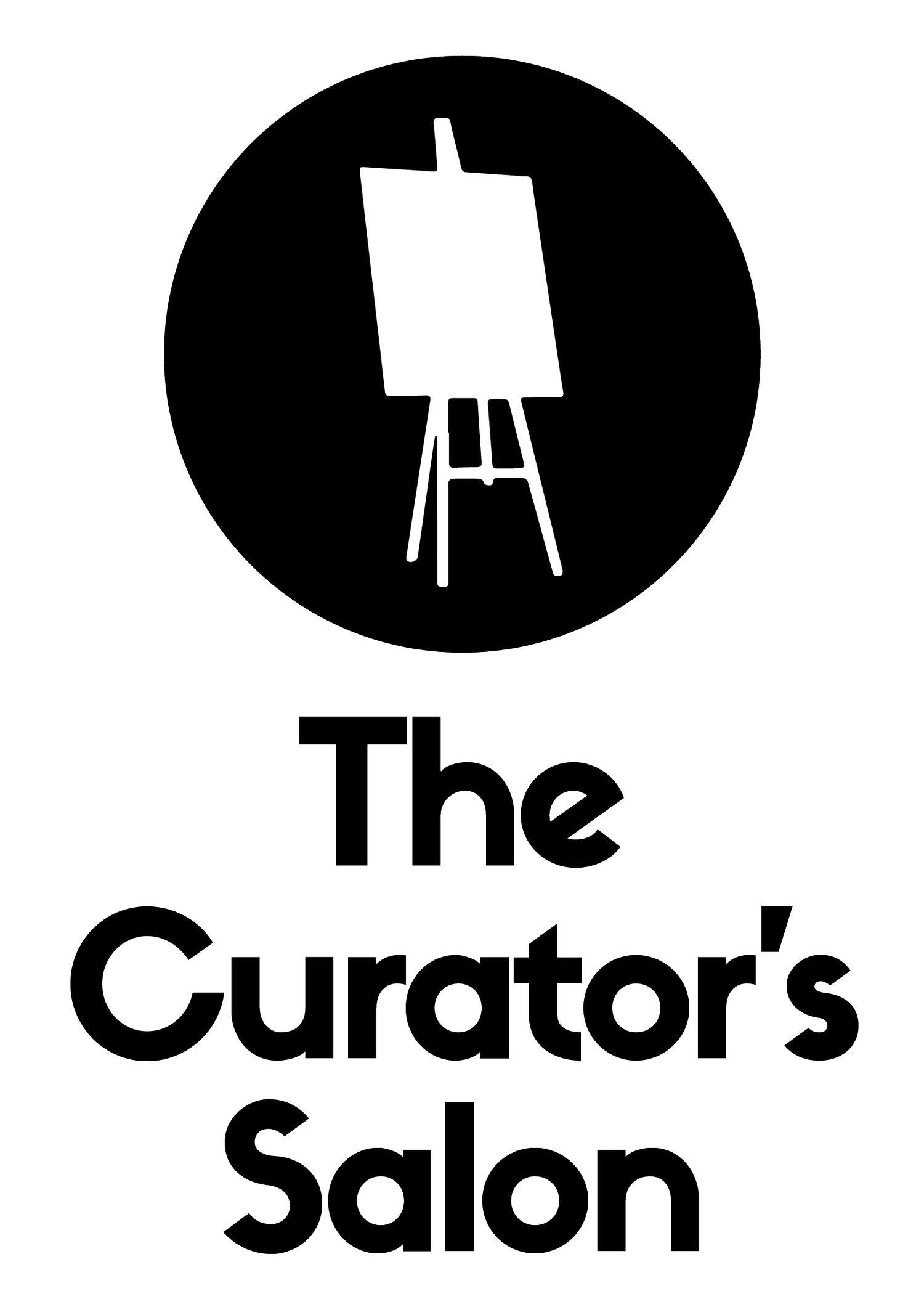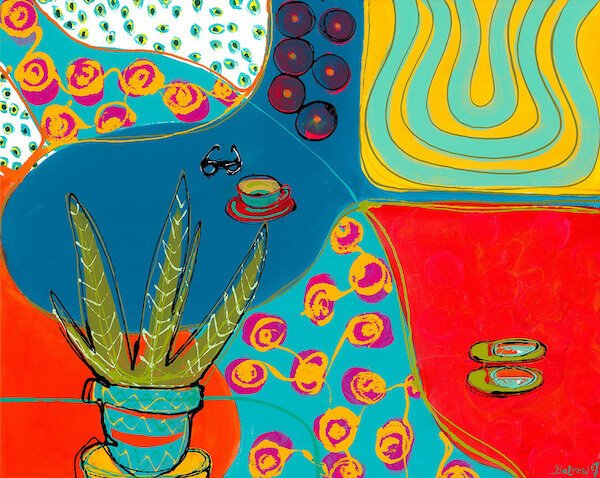Baljit Balrow
I had a chance to chat with Kent-based artist Baljit Balrow, whose colourful paintings rely on her subconscious and conscious playing together to create a final piece.
Orange Sideboard by Baljit Balrow
Share a bit about your background.
Being youngest of 6, I used my sketches as a language to be understood and I was in search of a voice within a family of bold personalities. I was really interested in science also, but my experimenting begged a different non-conforming path.
I used to draw photorealistic portraits from a young age and once I gained an audience, I used this platform to divert my interest into drawing figures from life. My parents created a studio in an unmade bathroom, where I could make a complete mess. This was such a gift to me and unheard of within my Indian culture to encourage this path.
This ‘permission’ was empowering to my creativity.
I went on to studying a Foundation course after A levels in 3D design, Fine Art and Bology and then went on and studied a Visual Art Degree where my work discussed the topics of my cultural identity and diaspora. This degree work was catapulted into exhibitions straight after my degree and has continued to tour 20 years on. I mentored freelance in schools for several years, finally settling to practice my own Art after having a family.
I am now based in Kent in a studio in my garden.
What ideas are you exploring in your work?
I’m just playing and trying to make sense of my mind and using art to connect to my inner self… it doesn’t always make sense, but I know when I get a mental release, I have connected into a channel …so I guess it’s an exploration of Identity and the subconscious mind.
I am looking at what we can store away in our mind at various depths, through discomfort, fear, loss of memory, trauma or just some blurred vision in a busy world. Nostalgia surfaces a lot through my interest in my cultural identity.
Through spontaneous play I bring to the surface an honest visual language to translate complex feelings to an audience. Colours and markings evoke feelings more than words for me. I have never felt sufficiently articulate through words but I do through colour.
I was raised bi-lingual, so I had to jump between two languages, however both cultures were most consistent for me through colours and music of the 70’s…so I see Art as my first language.
I am interested in the psychology of Art and how it can help with communication. I want my Art to do more than just be appreciated aesthetically. I hope it gives more than that.
Green Bedroom Slippers by Baljit Balrow
What is your artistic process?
I don’t really research; I strive to be present with my feelings when I approach my canvas. I am quite present and absorb my surroundings, so that features a lot in my work.
My work is intuitive and relies on subconscious and the conscious to take turns with the canvas. It’s my time to be present and now that I have a busy domestic life, this is my time to escape, however I do seem to reflect on domesticity it when I’m away from it.
I limit my palette for a series of works to what I am attracted to at that time…..then with all the chosen paints at hand, I begin placing the colours speedily until the subconscious takes over.
I never know when this is going to happen, I just give myself permission to let go.
Yellow High Light by Baljit Balrow
I also experiment with the paint’s viscosity and drying times of layers, creating another layer of visual language. Allowing the paint to take me to a new path if it wishes by giving it the capacity to spread, bubble, bleed and drip and I like to see what language it brings for me to work with it. Some days I want to leave a layer and see how it spreads, other times i will be more controlled.
I’m a huge fan of the properties of household gloss. It’s a misbehaving medium which I love working with.
To create smooth calm outlines, I use whole body movement like an instrument, so the paint flows without a break. I have to know its viscosity to determine what kind of movement it requires. So there is control and no control within the work.
I use almost anything other than a brush to drip, dribble and spill for the prevention of total rigidity. I want to share something deeper than my eye to hand coordination.
If I do see colours next to each other in a magazine I will tear and keep, but I rarely go back to look at it. I prefer it subconsciously stored, otherwise, I might reference it too much…and I don’t want that much control, as the painting may become too contrived
At present I am working on one large piece at a time due to space restrictions, but I have now created a larger space for multiple works.. so we’ll see what this brings!
Can you talk a bit about the evolution of your practice and your work?
My prior work was lighter and playful and was more spaced out/ less busy.
The last few years have been quite traumatic for my family and I have allowed this to be translated honestly through my work.
I have allowed more risk to enter the work, to reach a deeper connection allowing an emotional ‘release’, which has translated into in my markings
In a larger studio in the past I worked on larger pieces simultaneously, where the works could collaborate therefore would ‘share the load’ of a story to create a series. Now I work in a smaller studio, so if I work on one large piece I feel that canvas has to tell the whole story; until I have space for another, therefore each piece holds a lot of responsibility to share information and can be quite intense… each painting can be very different from the next in an exhibition.
I’m ok with that now…I pay less attention to an audience and produce honest work..this is how I feel I have developed.
I am more responsible for my art.
You can follow Baljit on Instagram @baljit_barow.



